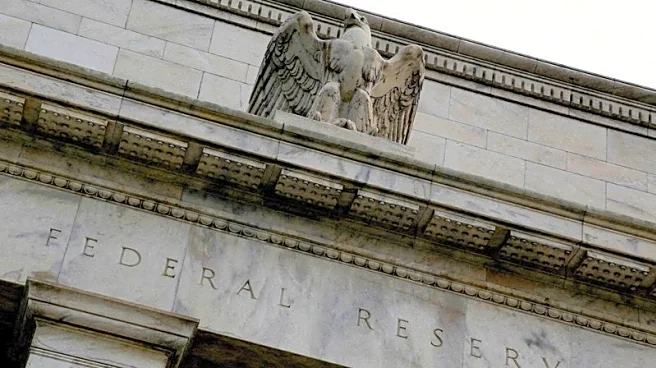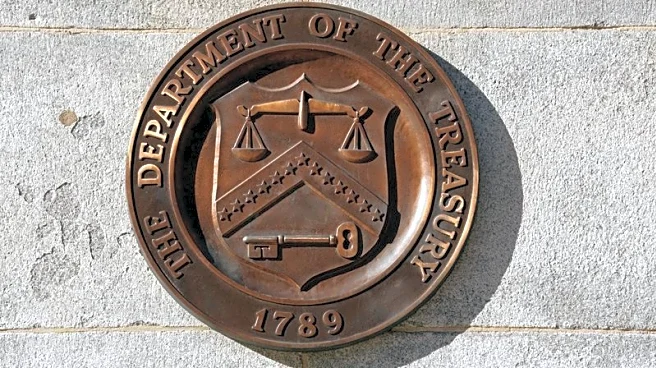What's Happening?
Government bond yields have been on the rise, causing concern over increased borrowing costs for nations and impacting various sectors of the economy. Analysts describe this as a 'slow-moving vicious circle,' where higher yields lead to increased debt servicing costs, further pressuring fiscal deficits in major economies like the U.S., U.K., France, and Japan. This situation has led to volatility in the bond market, with yields reaching significant highs before easing slightly. The U.S. 30-year Treasury yield, in particular, has surpassed 5% for the first time since July, raising concerns about its impact on mortgage rates, which are influenced by central bank interest rates and government bond yields. President Trump's criticism of the Federal Reserve has added to the complexity, as it may affect short-term rates but not necessarily long-term yields.
Why It's Important?
The rise in government bond yields has significant implications for the U.S. economy. Higher yields increase the cost of borrowing, affecting mortgage rates and potentially making homeownership more expensive. This can lead to reduced consumer spending and slower economic growth. Additionally, the bond market's traditional role as a safe haven during stock market volatility is being challenged, as higher yields can pressure stock valuations. The corporate bond market, however, may benefit from higher yields as they attract demand and encourage financial discipline among companies. Nonetheless, the overall economic drag from high yields could constrain policy choices and private investment, leading to potential financial instability.
What's Next?
As the Federal Reserve is expected to resume rate cuts following weaker-than-expected jobs data, the focus will be on how these actions influence both short-term and long-term yields. The ongoing fiscal challenges and President Trump's influence on monetary policy will continue to be key factors in determining the trajectory of bond yields. Market participants will closely monitor these developments, as they have far-reaching implications for mortgage holders, investors, and the broader economy.
Beyond the Headlines
The rising bond yields highlight the delicate balance between government fiscal policies and market reactions. The potential for government austerity measures to stimulate economic confidence and reduce yields could be explored as a strategy to alleviate the economic drag. This situation underscores the interconnectedness of global financial markets and the importance of coordinated policy responses to maintain economic stability.












